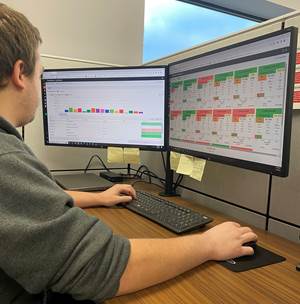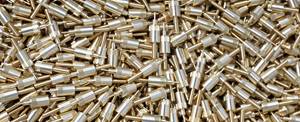Connect, Monitor and Be Prepared
Real-world applications chart a three-step course for CNC machining operations that have yet to realize the promise of data-driven manufacturing.
Share









Hwacheon Machinery America, Inc.
Featured Content
View MoreIndustry 4.0. Industrial Internet of Things. Factory of the future. Digital thread. Such terms define a supposed new era in manufacturing, and industry events like the International Manufacturing Technology Show (IMTS) buzz with discussion of smart machine tools, smart robots, smart gages and smart everything. However, many terms in this heady new lexicon can seem meaningless for CNC machine shops.
Make no mistake: There is real promise for machining businesses in an era when seemingly anything can have an IP address. Application stories published in Modern Machine Shop prove that. The stories also prove that a shop doesn’t have to meet anyone’s grandiose definition of a “smart factory” to base decisions on real-world evidence, and that is the essence of data-driven manufacturing. The reason for the revolution is that we can now act on evidence that would be unknowable or inherently outdated without the capability to pull data directly from shopfloor equipment. Taken as a whole, our coverage indicates that those hoping to join in have three essential tasks ahead: to connect, to monitor and to be prepared.
To connect is to build a network; that is, to interlink a shop’s machine tools and other manufacturing devices. This first step can be challenging in a facility with a variety of equipment from various eras and various manufacturers. We might not have recognized it at the time, but our deeper coverage of data-driven manufacturing began with that challenge about 10 years ago—specifically, with a series of articles about MTConnect. Penned by Mark Albert, former editorial director and longtime mentor to yours truly, these pieces explored the development and the application of this standard communications protocol for CNC machine tools and other manufacturing equipment.
Step two is leveraging those connections to monitor the status and health of machine tools and other equipment on the floor. In 2016, Mark reported on how a manufacturer of specialty valves and accessories had significantly increased productivity and machine uptime despite being in the earliest stages of implementing a monitoring system that shed light on, among other metrics, the shop’s overall equipment efficiency (OEE) rating. This past April, he reported on a contract operation that realized more unexpected gains from its newly acquired shopfloor data: strengthening and fine-tuning its employee incentive program.
This unexpected advantage brings us to the third step: be prepared. A shop’s motivation for moving toward data-driven manufacturing should not be limited to advantages that can be envisioned now. Many of the most important gains will be difficult to foresee at the outset. Implementing data-driven manufacturing is also an exercise in ensuring a shop is prepared—that it has the infrastructure in place to take advantage of whatever comes next.
What comes next will be a primary focus of this column. That’s not to suggest we won’t discuss the first two steps, machine monitoring and machine interconnection. Both will be prime fodder for discussion here. However, so will developments that might not seem applicable to CNC machining, or at least not at first. Advances in virtual and augmented reality, artificial intelligence, advanced simulation and other new technologies likely will impact machine shops in time. They are already seeking and finding roles in other manufacturing applications.
Perhaps one of the technologies highlighted here will spur an idea for innovation in your own shop. Perhaps you’ll be the one to show all of us the promise of that technology for CNC machining, and the future we were preparing for when we first began to connect. Maybe we’ll even pay you a visit.
Related Content
Machine Monitoring Boosts Aerospace Manufacturer's Utilization
Once it had a bird’s eye view of various data points across its shops, this aerospace manufacturer raised its utilization by 27% in nine months.
Read MoreManufacturer, Integrator, Software Developer: Wolfram Manufacturing is a Triple Threat
Wolfram Manufacturing showcased its new facility, which houses its machine shop along with space for its work as a provider of its own machine monitoring software and as an integrator for Caron Engineering.
Read MoreEasy-To-Install Data Acquisition System for Real-Time Monitoring Across Brands
cnSEE from All World Machinery Supply combines easy installation and monitoring across multiple machines.
Read MoreReinventing a Precision Shop With a Data-Driven Mindset
When this machine shop lost 90% of its business within three months, a reinvention was in order. Here's how it survived after quickly falling on hard times.
Read MoreRead Next
Building Out a Foundation for Student Machinists
Autodesk and Haas have teamed up to produce an introductory course for students that covers the basics of CAD, CAM and CNC while providing them with a portfolio part.
Read More5 Rules of Thumb for Buying CNC Machine Tools
Use these tips to carefully plan your machine tool purchases and to avoid regretting your decision later.
Read MoreRegistration Now Open for the Precision Machining Technology Show (PMTS) 2025
The precision machining industry’s premier event returns to Cleveland, OH, April 1-3.
Read More
































.jpg;maxWidth=300;quality=90)















